Historians confirm Loch Ness Monster helped build the Pyramids
In a revelation that has left both archaeologists and cryptozoologists clutching their tweed blazers in disbelief, a newly translated set of ancient papyrus scrolls has confirmed what many conspiracy theorists have long suspected: the Loch Ness Monster was part of the original crew that built the Great Pyramids of Giza.
Yes, you read that right.
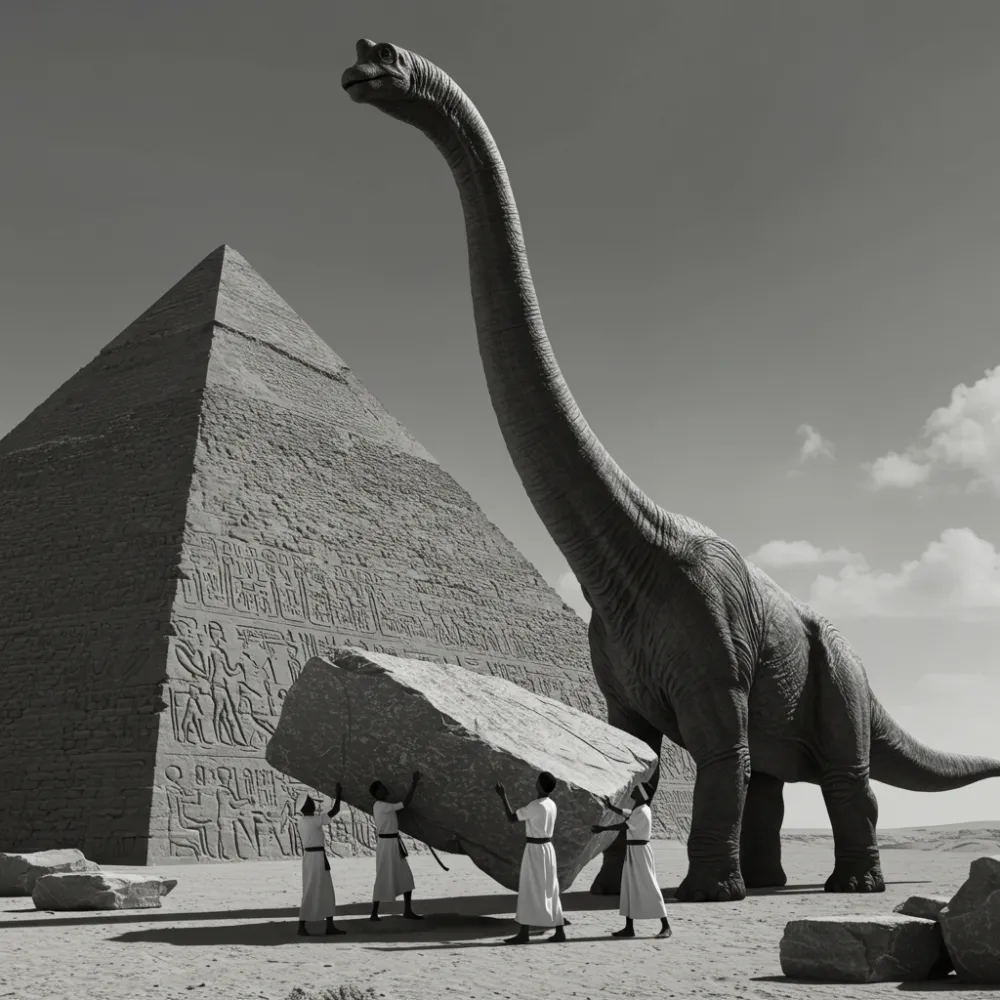
Nessie — the same shy, aquatic cryptid who’s spent decades dodging grainy cameras in the Scottish Highlands — was apparently moonlighting as an elite stonemason in Ancient Egypt some 4,500 years ago. Turns out she wasn’t lurking in dark waters out of boredom; she was on paid leave, recovering from centuries of manual labor beneath the desert sun.
The scrolls, unearthed near the Valley of the Kings, were found sealed inside a limestone chest marked with an unfamiliar glyph — a crude sketch of what appears to be a long-necked creature with flippers, sipping what looks suspiciously like a cup of tea.
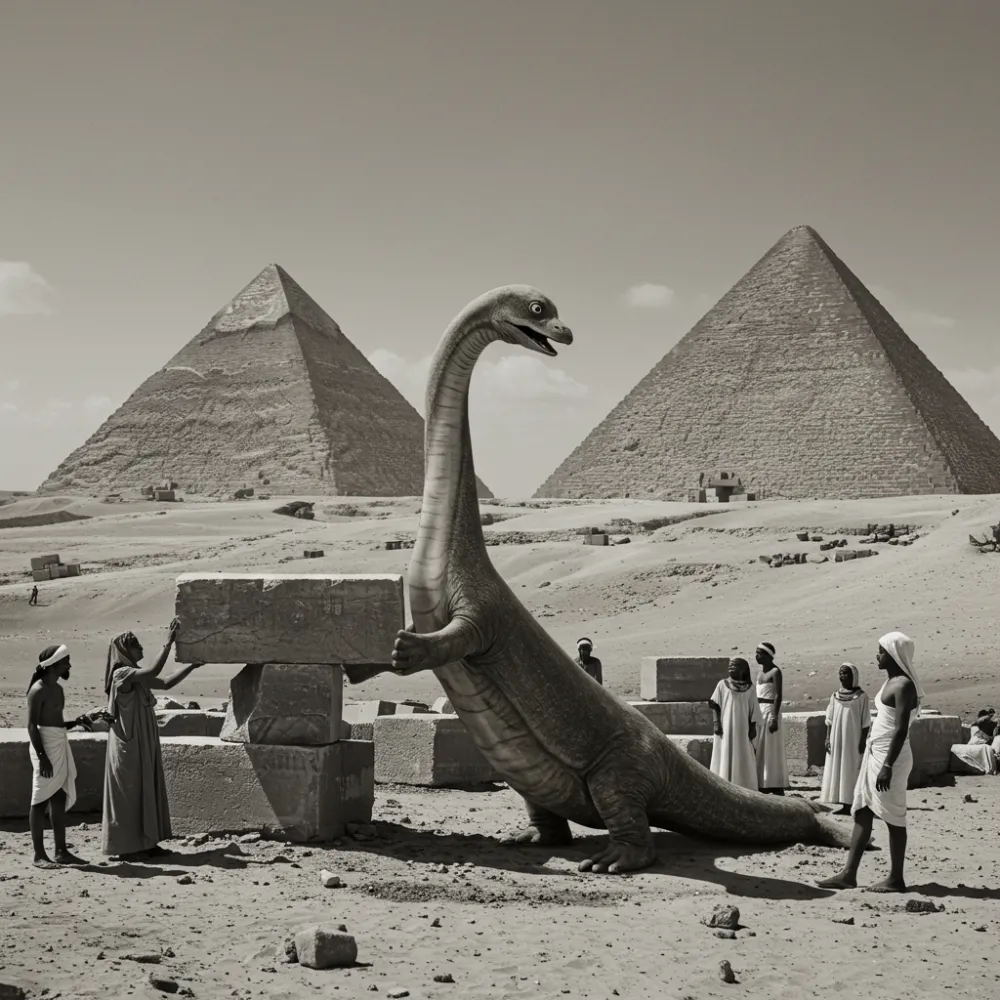
Once translated, the contents stunned experts. They describe the operations of a “Divine Work Force”, summoned by Pharaoh Khufu himself, consisting of non-human contractors. The team allegedly included:
Nessie, chief hauler of limestone and supervisor of water transport logistics
Bigfoot, responsible for lifting heavy beams and carrying sacred loads
The Mothman, aerial surveyor and structural overseer during nighttime shifts
Each spring, Nessie would migrate from the Scottish Highlands to the Nile Delta, swimming upstream in a manner described in the scrolls as “with great splashing and alarming grace.” Witnesses from the era believed she was a sacred water deity, and entire temples were dedicated to her “mystical wake.”
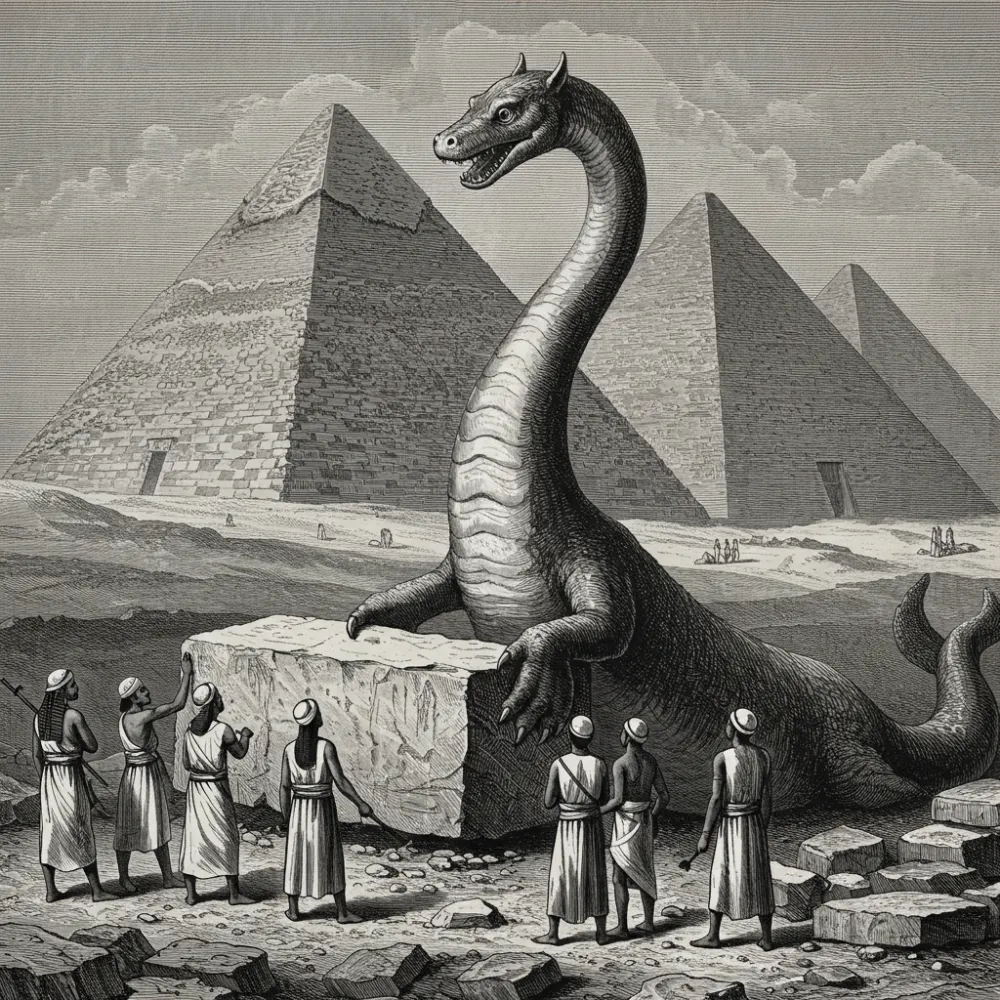
In reality? She was just clocking in for another 12-hour shift, dragging multi-ton blocks of limestone behind her “like they were bags of Porage Oats,” as one modern historian described.
Further evidence from the scrolls paints a strikingly unglamorous picture of Nessie’s time in Egypt. She reportedly negotiated hard for fair compensation, demanding a steady supply of river trout, mud baths, and one month of uninterrupted lake time per year.
“She was a professional,” says Dr. Imani Rashad, head of the Egyptian Department of Lost Realities at Oxford’s Underbelly Institute. “Nessie wasn’t just brawn. She offered logistical insights. She suggested using the Nile’s seasonal flooding as a natural conveyor belt. That’s why some of the pyramid stones seem oddly water-smoothed. That’s her work.”
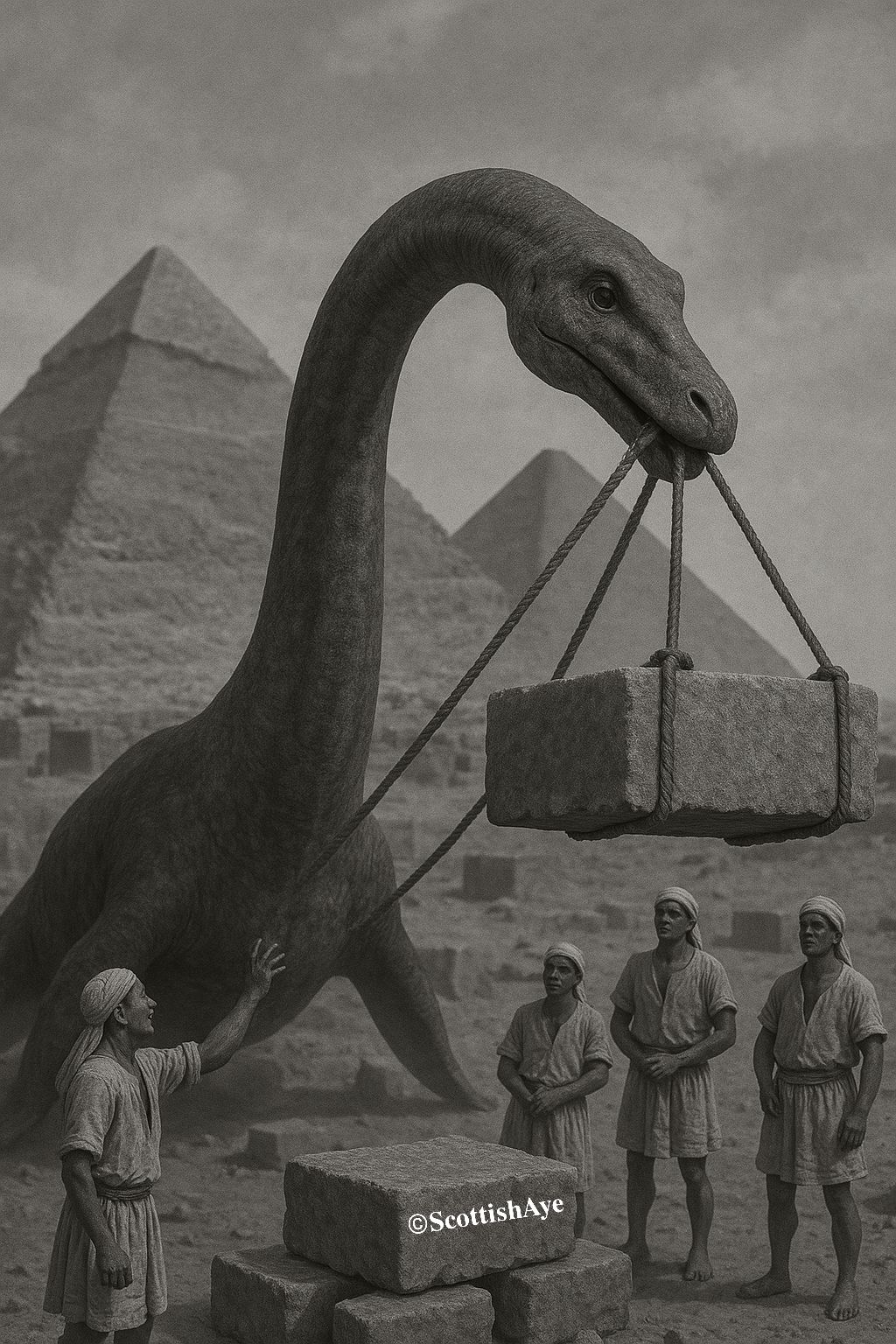
Indeed, geological scans of certain limestone blocks show signs of being towed underwater by a massive aquatic creature, with claw marks and scale scrapes matching no known fauna — except those in Nessie eyewitness reports.
Despite her contributions, Nessie’s time in Egypt ended on a sour note. The scrolls reference a dramatic council meeting in which she confronted the Pharaoh over “pyramid royalties and creative rights.”
Apparently, she wanted credit for the precise alignment of the pyramids with Orion’s Belt, but was told, and we quote, “know thy place, beast of the river.”
Furious, and fed up with the constant sunburn, Nessie quit the crew and swam northwest in protest. Her destination? A quiet, deep loch in the Scottish Highlands with mild weather, abundant fish, and absolutely no Pharaohs.
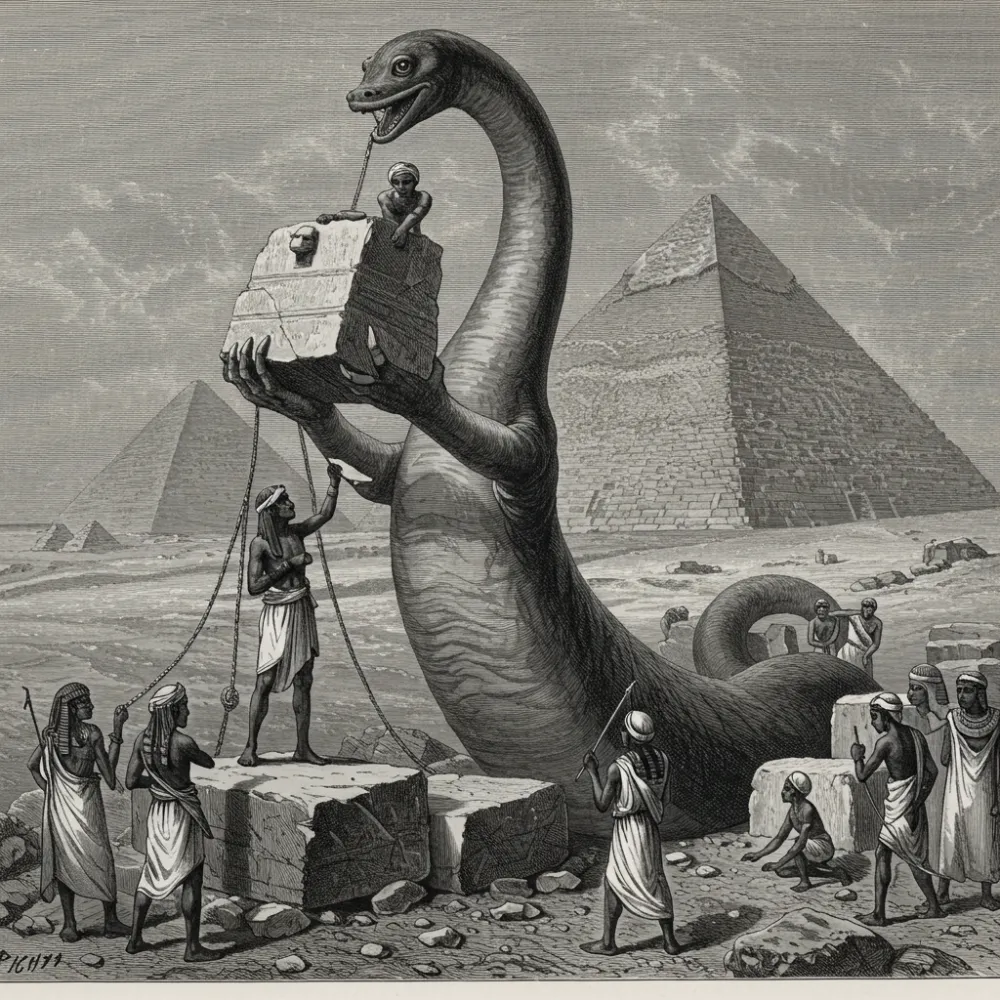
Ironically, she would spend the next 1,000 years dodging amateur photographers and people tossing bread rolls into the water, hoping for a blurry miracle.
So why has this story remained hidden for so long? Experts point to a coordinated effort by early historians to sanitize Egypt’s image.
“The Greeks couldn’t handle it. The Romans thought it was ‘too strange.’ Victorian archaeologists refused to publish anything involving ‘monsters and mythical nonsense,’” says Dr. Rashad. “So Nessie was buried — figuratively, not literally — in the footnotes of history.”
But now, with the documents verified, 3D scanned, and peer-reviewed (at least by the International Cryptid Historical Society, or ICHS), the world must come to terms with a simple truth:






